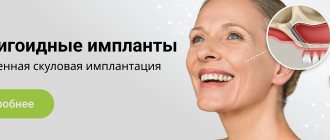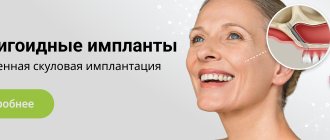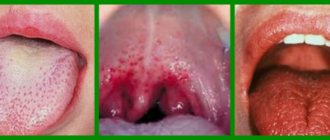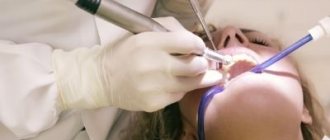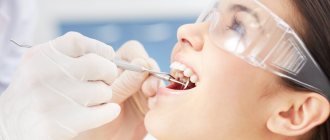What it is
This term suggests a symptom complex of secondary rashes. They appear after various forms of skin inflammation, pimples, and acne. Considering that its debut usually occurs in adolescence, the remaining traces pose a serious problem for youth and affect the psychological state of young people. If acne develops at an older age, the patient may also experience post-acne; treatment in this case is complicated by the general condition of the skin.
The consequences come in the following forms:
- hyperpigmentation;
- pathological scars;
- atheromas;
- milia (whiteheads).
Treatment and subsequent recovery of patients requires an integrated approach.
Reasons for appearance
Human skin has a complex structure; in addition to the cells themselves, it contains hair follicles, sweat and sebaceous glands. If the functioning of the latter is disrupted, their ducts narrow, making it difficult for secretions to reach the surface. It accumulates inside the gland, creating ideal conditions for the proliferation of bacteria and the formation of inflammation.
Over time, swelling occurs in the area of the pimple, and collagen begins to be actively produced in this area. This means that denser tissue is formed, so patients’ requests often sound like this: “How to remove post-acne scars on the face?” The capillary network also grows and the work of pigment cells is stimulated. Darker stains are formed that are more durable.
Also factors that provoke the negative consequences of acne are:
- long-term fight against inflammation;
- unprofessional acne removal;
- the presence of nodules or cysts on the skin.
Persistent acne
Post-acne may be a consequence of this phenomenon, which cannot be dealt with for a long time. As a rule, to solve this problem it is recommended to do a hormone test.
The fact is that the receptors of the sebaceous glands, which are directly involved in the process of acne formation, are sensitive to male hormones, androgens (they are produced in the body of both women and men). An increase in their production also leads to a decrease in the content of linoleic acid in sebaceous secretions, and subsequently to the reliability of the skin’s protective barrier.
Such situations, and therefore prolonged inflammation on the surface of the epidermis, can be provoked by the following factors:
- puberty;
- endocrine diseases;
- obesity;
- menopause;
- gastrointestinal diseases;
- taking medications;
- stress;
- chronic fatigue syndrome, etc.
Mechanical damage to the skin
In order not to solve the problem of how to quickly get rid of post-acne scars forever and remove neoplasms, during the period of exacerbation of acne, it is recommended to avoid rough influence. Squeezing pimples, as well as mechanical damage (often resulting from careless care), leads to the formation of scars and age spots in this area. This is especially dangerous for people with dark skin, and also if the patient’s age exceeds 35 years. The peculiarities of the functioning of the endocrine glands during this period often lead to the formation of scars after acne and acne.
Mechanical injury to the face can also result from inaccurately performed cleaning or deep peeling. These procedures are not recommended during an exacerbation period.
The best external remedy for scars and scars -
We have already said above that external preparations will be effective only if they are used during the period of scar maturation (24stoma.ru). Moreover, an ointment or cream for scars and scars must be used for at least 2-3 months before you can notice the first results. If you missed the period of scar maturation, then external remedies will not be effective and you will need more radical treatment methods (for example, laser). Let's look further at what external means we can use to get rid of scars.
1) Remedies for scars and scars based on silicone -
Scar products based on medical silicone have been used since approximately 1983. Silicone gels work on the principle of occlusion and hydration. After applying silicone to the surface of the skin, it is absorbed, leaving an invisible “occlusive bandage” on the surface (this layer prevents the evaporation of water from the surface of the skin/scar, but at the same time allows air to pass through). As a result, this increases the hydration of scar tissue, i.e. saturating it with water reduces the growth of blood capillaries.
As a result, this has a positive effect on the restructuring of the scar during its maturation, which increases the likelihood of reducing its size (while simultaneously improving such indicators as elasticity and extensibility). The hardness of the scar decreases, its color improves, and itching decreases. It must be said that in addition to silicone gels, there are also special silicone dressings that are worn from 12 to 23 hours daily - for several months.
- Gel Dermatix (USA) – costs 2,400 rubles per 15 g tube.
- Kelo-Coat gel (USA) – price 2400 rubles per 15 g tube.
- Zeraderm Ultra - price about 5,000 rubles per 20 g tube (this is an analogue of the first two drugs, but with a richer composition, which, in addition to silicone, additionally includes coenzyme Q10, vitamins A and E, as well as SPF 15).
The silicone dressings we talked about above are made on a fabric basis and are translucent. They have multiple uses, i.e. you don't need to change it to a new one every day. Silicone dressings come in specific sizes, but you can cut the size you need with scissors. The silicone bandage should be on the skin for 13 to 23 hours daily; it can only be removed for antiseptic treatment of the skin and the bandage itself.
- Dermatix silicone dressing - price from 1,400 rubles (size 4x13 cm), about 5,000 rubles (size 13x25 cm).
2) Scar remedy based on onion extract –
Onion extract is used in the treatment of burns, hypertrophic and keloid scars. It contains the flavonoids quercetin and kaempferol, which have an inhibitory effect on fibroblast proliferation and collagen production, which directly affects the formation of scar tissue. In addition, onion extract increases the expression of MMP-1 (matrix metalloproteinases, which belong to endopeptidases - enzymes that destroy the extracellular matrix of connective tissue).
Matrix metalloproteinases tend to destroy newly formed pathological collagen, which makes up scar tissue. An example of a drug with onion extract is the Contractubex gel. It also contains sodium heparin, which increases the hydration of scar tissue, i.e. saturating it with water. The drug Contractubex (Germany) costs only about 600 rubles for a 20 g tube and about 1000 rubles for a 50 g tube.
3) Products with proteolytic enzymes –
There is a Russian drug Fermenkol, which contains a complex of proteolytic enzymes (collagenolytic proteases), as well as sodium heparin. It is understood that these enzymes should destroy the excessively formed pathological collagen that makes up hypertrophic and keloid scars. Fermenkol gel costs from 1,500 rubles per 30 g tube, but there is also a form in the form of a solution (for electrophoresis).
There are clinical studies that show that enzymes penetrate the skin quite poorly due to the large size of the molecules. Therefore, the most effective method is the use of Fermenkol solution in medicinal electrophoresis procedures (this method significantly increases the penetration of enzymes into the rumen). The phonophoresis technique with gel will be slightly less effective, and the most ineffective method is conventional gel applications. Therefore, it is better to use gel applications only during breaks between electrophoresis courses, and not as monotherapy.
Areas of localization and how to remove post-acne spots
The place where scars appear can be not only the face, but also other areas of the body:
- neckline;
- back;
- neck.
Be that as it may, in most cases the marks are on open areas of the body, which worsens the psychological state of the patients. Improper treatment can lead to the skin retaining an uneven texture, and the places where there were inflamed acne will be clearly visible. That is why it is important for the doctor to give comprehensive recommendations on how to quickly cure and remove post-acne on the face, how to get rid of spots on other parts of the body, so that the patient’s quality of life does not decrease and the emotional background is normalized.
Scarring
Healing of a granulating wound occurs through scarring and epithelization. At the final stage of healing, collagen fibers appear among the cells of the granulating tissue, the number of granules decreases, and the number of fibers increases. Ultimately, the fibrous substance passes into the connective tissue and forms a scar.
When wounds heal by primary intention, delicate scar tissue is formed, which tends to resolve.
In case of healing by secondary intention, a rough scar is formed, which will not be easy to get rid of.
Kinds
The consequences of acne are of several types:
- scars - at the site of the pimple, an area of dense tissue is formed, which is noticeably different from the surrounding skin and is characterized by a high content of collagen fibers;
- pigment spots - they form at the site of acne rashes and are noticeably different from the general tone;
- congestive erythema - a complication that occurs as a result of inflammation of small vessels, as well as subcutaneous fatty tissue and is accompanied by redness and thickening at the site of the former pimple;
- whiteheads, enlarged pores, etc.
To understand how to get rid of post-acne on the face and what removes it well, you need to establish which of the main types your problem belongs to. Only after this can you create an effective comprehensive treatment program.
We recommend
Curacen Essence (20 fl x 2 ml)
Nanoneedles with ultra-thin walls 30G
Nanoneedles with ultra-thin walls 33G
Curacen – for injection
Enlarged pores
The fact is that these are opening ducts of the sebaceous glands and the problem is directly related to acne. They expand due to hormonal imbalances, increased oily skin, poor diet, use of inappropriate cosmetics and other reasons. An additional factor that has recently been identified is the impact of free radicals, their content is increased in the atmosphere of large cities. In search of a way to exactly how and whether it is possible to cure post-acne on the face, you need to find out why the pores are enlarged.
Should we fight this problem? Certainly. They look unaesthetic, worsen the dermal relief, and in addition, they are an entry point for infections and are clogged with the secretion of the sebaceous glands. The processes of skin respiration and metabolism are disrupted.
To avoid enlarged pores and acne formation, you can undergo professional cleaning on time. This procedure stimulates their narrowing and normalizes the functioning of the sebaceous glands. With its help, you will stop thinking about how to get rid of post-acne spots and remove redness on your face with the help of a cosmetologist.
Stagnant traces
They are also called erythema. They arise as a result of capillary expansion. As a result, red areas form on the skin. In some cases, such phenomena go away on their own, especially if they arise as a response to mechanical stress, due to a reaction to intense sun or similar factors.
But most often, it is better to consult a specialist with such a problem, since usually the consequences of this kind are persistent and cannot be removed with home remedies.
Hyperpigmentation (brown spots)
Increased skin pigmentation usually occurs as a result of inflammation of papulopustular elements. Papules are inflamed small nodules with a diameter of 2-4 mm. Pustules are nodules with a cavity filled with pus formed inside them. A light-colored crust may form on their surface.
The formation of hyperpigmentation is usually promoted by active solar and mechanical exposure, for example, when trying to squeeze out pimples.
Whiteheads
The problem of how to effectively get rid of post-acne, how to cure the consequences of inflammation, is especially aggravated if the skin lesion takes the form of whiteheads (milia).
As a rule, they are localized in the following areas of the face:
- forehead;
- nose;
- cheeks;
- chin;
- around eyes.
Most often, milia appear during periods of hormonal changes, including adolescence, as well as during pregnancy. The second factor influencing the formation of whiteheads is increased fat content.
Ways to effectively remove post-acne scars, how to get rid of them in these situations, should include changing your diet, a competent approach to skin care, as well as monitoring hormonal levels and its timely correction.
Scarring
They can form where pimples once were. Studies have been conducted in which it was found that about 1% of people who have suffered from acne suffer from them. However, approximately one-seventh of scars are disfiguring in nature, which means they lead to serious psychological problems. This condition requires an individual approach and careful study of the quality of the skin around the scar. Also, the nature of treatment depends on the stage of maturity.
Why do post-acne appear?
The unpleasant consequences of acne are always the result of incorrect or insufficient professional treatment. First of all, it is important to maintain hygiene: do not squeeze out the inflammatory element, do not touch it with dirty hands, follow all stages of skin cleansing and the recommendations of a dermatologist.
The causes of post-acne can be different: deep inflammation, long-term struggle with acne, incorrectly selected treatment. All this inevitably leaves unsightly marks, especially the regular squeezing out of inflammatory elements, which, as we said earlier, damages the capillaries.
Factors in the appearance of post-inflammatory erythema are divided according to the nature of the formation into pathological and physiological. The first include:
- infectious diseases or pathologies of the body;
- autoimmune diseases;
- thermal, radiation or chemical burn.
Physiological reasons include:
- physical injury or intense massage;
- certain medications taken in large doses;
- long exposure to the open sun without proper protection.
Mild erythema goes away in a couple of days; in more serious cases, recovery may take several weeks. The speed depends on the individual characteristics of the body: cell regeneration (ability to renew), hormonal levels, deficiency or excess of vitamins, as well as on the cosmetics used to combat post-acne.
The causes of post-inflammatory pigmentation are still not fully understood, but scientists have identified several factors that influence their development. These include:
- stress;
- hormonal disorders;
- infection;
- diet;
- genetic predisposition.
Some experts believe that exposure to the sun does not affect the appearance of post-inflammatory pigmentation, but there is no evidence of this yet.
Methods of disposal
Advising on what works well to remove acne marks on the face, experts draw attention to the need for an integrated approach:
- diagnosis by a doctor, drawing up recommendations taking into account the individual characteristics of the patient’s skin;
- consultation with a cosmetologist who will recommend hardware and injection methods;
- regular use of home care products.
What can you do at home?
To get rid of stains, it is best to take the advice of experts who recommend home care products designed to resolve scars, such as Contractubex. The enzymes contained in these medications are designed to break down the dense collagen fibers that form scar tissue.
But home peels and self-exfoliation are unlikely to give the expected effect. They act at the level of the epidermis, and acne is a deep-seated change in the skin that affects the dermis. That is why it is recommended to consult a doctor for professional treatment of post-acne and prescribe the necessary products, which should be designed for deep care.
What treatment methods are used in cosmetology?
How to quickly remove acne, spots, scars and cysts? Patients often come to a cosmetologist with such a request. Experts most often recommend the following treatment options:
- Phototherapy. Exposing the affected areas to light of a certain length improves the condition of the skin. As a result, inflammation decreases and erythema disappears.
- Microdermabrasion. This is a delicate procedure, during which the cosmetologist removes the top layer of the epidermis and carefully polishes its surface. It is effective if home cosmetics do not allow you to choose a product that can remove post-acne.
- Laser resurfacing. It is not mechanical and is necessary to improve the relief due to the action of the light beam. The laser allows you to fine-tune the depth of exposure, but it is important to remember that for about 10 days after it, crusts and redness will remain on the face.
How to speed up healing
The speed of wound healing varies. It depends on the nature of the injury and the individual characteristics of the patient, such as age, nutrition, and medications taken.
To speed up healing, it is necessary to provide optimal conditions for tissue regeneration at each stage. This role is fulfilled by therapeutic dressings designed for each stage of healing.
The method of hydrotherapy has a positive effect. Its essence consists in the sequential use of two dressings HydroClean and HydroTac. Using the first, the wound is cleaned, and then a second is applied, creating optimal conditions for granulation and epithelization.
How to quickly lighten or conceal
This is only possible if you use an effective integrated approach. That is, here it is necessary to combine competent home care and post-acne treatment from a cosmetologist, and you also need to take the necessary preventive measures.
Cosmetic and therapeutic products provide noticeable positive results, including:
- retinol;
- soft acids;
- keratolytics;
- natural ingredients, including badyagu and arnica.
However, they must be used with caution. Skin with acne scars is sensitive and needs delicate and competent care; active components of cosmetics can only aggravate the situation. In particular, it is important to remember that retinol is UV sensitive and should not be used if you plan to go out in the sun. That is why it is not recommended to get rid of this problem on your own, but should be done under the supervision and control of a doctor.
What to do if the wound does not heal
Non-healing or chronic are wounds that do not respond adequately to therapy despite prolonged treatment. Such wounds are usually caused not by external factors, but by reasons hidden inside the body, leading to disruption of metabolic processes and, as a consequence, disruption of the wound healing process. This category includes trophic ulcers, bedsores, and diabetic foot ulcers. Before using any dressings, consult a doctor: therapy and treatment of wounds can only be prescribed to you by a doctor!
For the treatment of chronic wounds, HARTMANN has developed a two-bandage system - HydroClean Plus and HydroTac.
The HydroClean Plus cleansing dressing can be used at all stages of wound healing, effectively removing necrotic tissue and pathogenic bacteria from the wound surface. They get caught in the absorbent layer and die under the influence of the antiseptic. The HydroTac dressing has absorbent and moisturizing properties and also protects the wound from secondary infection.
With the help of the hydrotherapy system, many patients have been able to significantly alleviate suffering and improve their quality of life.
Can spots go away on their own?
How to quickly remove acne marks, and can they disappear without any help? This question is asked by many patients who are encountering this problem for the first time. It is important to remember that scarring and pigment formations on the skin cannot be ignored; it is imperative to undergo treatment. They do not go away on their own, and without the necessary therapy the situation can only get worse. Therefore, we recommend that you come for a consultation with a dermatologist and, if necessary, undergo an examination.
We recommend
Curacen Essence (20 fl x 2 ml)
Nanoneedles with ultra-thin walls 30G
Nanoneedles with ultra-thin walls 33G
Curacen – for injection
Stages of healing
The wound healing process goes through three main stages: inflammation, regeneration, and restoration of the epithelium.
The inflammation phase begins immediately after injury and in an uncomplicated state lasts for 4–5 days. During the hemostasis stage, platelets attach to sites of injury and cause a chemical reaction that activates fibrin, which forms a matrix network and binds platelets to each other. This is how blood clots form, blocking damaged blood vessels and stopping bleeding.
At the stage of proliferation and regeneration, the process of angiogenesis, collagen deposition, and the formation of granulation tissue (young connective tissue formed in places of defects) occurs. The regeneration stage can last 2–4 weeks depending on the size of the defect.
The final stage is the formation of the epithelium. Depending on the severity of the injury, the process can last from several weeks to a year or more.
How to cure with the drug Curasen
When looking for an option on how to effectively remove post-acne on the face, placental therapy comes first. In particular, dermatologists recommend using the drug CURACEN. Due to the fact that it is made on the basis of human placenta hydrolyzate, it has the following effects:
- deep hydration and nutrition of the skin from the inside, prevention of inflammatory processes;
- increasing elasticity and firmness;
- compaction and alignment, creation of an internal cellular framework;
- smoothing out fine, moderate and deep wrinkles;
- elimination of hyperpigmentation, as well as reducing the severity of dark circles in the lower eyelid area;
- tightening in conditions of gravitational ptosis of soft tissues;
- stimulation of the body’s own synthesis of new cells, as well as acceleration of metabolism;
- assistance in restoring the dermis after aggressive cosmetic procedures or plastic surgery.
How to prevent acne
To remove acne and red post-acne, remove traces, treatments in cosmetology and therapy turn out to be very effective. However, in many cases it is easier to prevent the formation of acne and subsequent complications:
- balance your diet, exclude fatty foods, limit your consumption of sugar, tonic drinks, and canned foods;
- use cosmetics suitable for your skin type;
- do not overuse makeup;
- do not squeeze pimples;
- consult a dermatologist.

